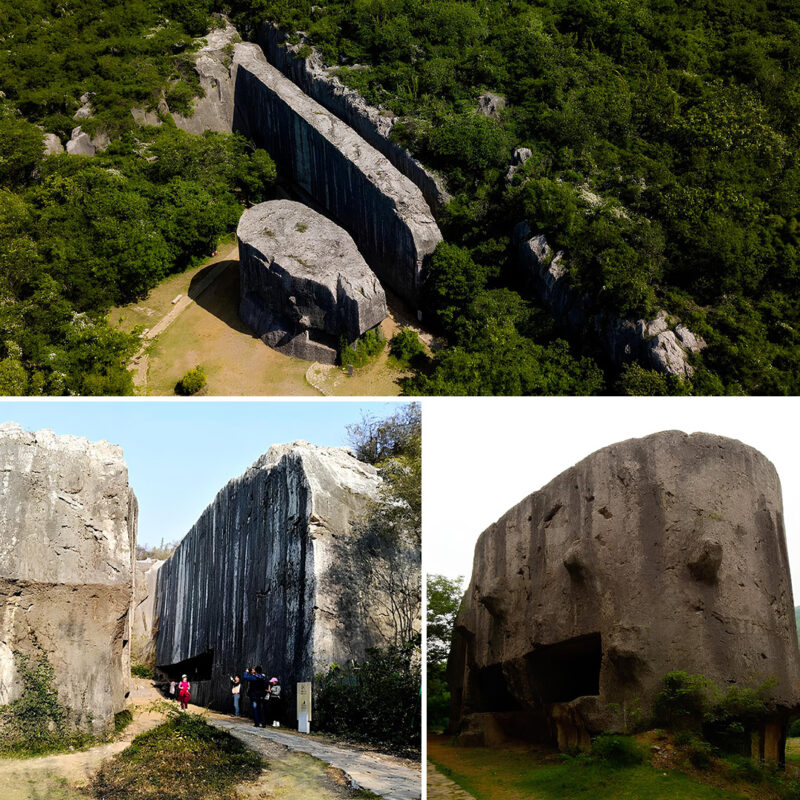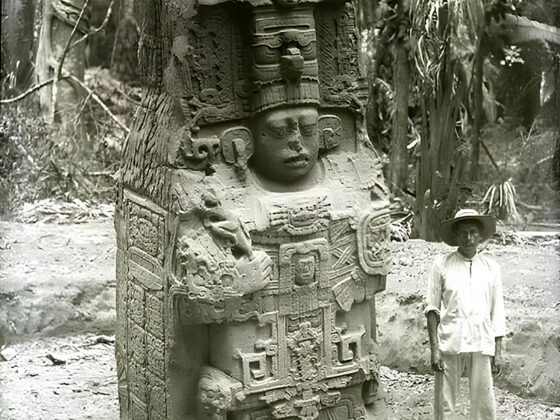Located near Nanjing, China, the Yangshan Quarry is the site of an enormous unfinished stele dating back to the early 15th century. This massive stone project was commissioned during the reign of the Yongle Emperor in the Ming Dynasty.
The Yangshan Stele, as it’s known, remains partially attached to the bedrock of the quarry. It weighs an estimated 8,000 metric tons and stands approximately 55 feet tall, making it one of the largest steles in the world.
The quarry site provides a unique glimpse into ancient stone-cutting techniques. Visitors can observe extensive incisions, channels, and holes carved into the rock face.
The stele was intended to be cut into three separate pieces: the base, body, and head. However, the project was abandoned, likely due to the immense challenges of transporting such massive stone blocks.
Today, the Yangshan Quarry serves as an open-air museum, preserving evidence of ambitious imperial projects and ancient stoneworking methods. The site attracts historians, archaeologists, and tourists interested in China’s architectural heritage and engineering capabilities during the Ming Dynasty.
The quarry’s historical significance extends beyond the unfinished stele. It was a major source of stone for numerous buildings and monuments in Nanjing, including city walls and imperial structures, from the time of the Six Dynasties (220-589 CE) through the Ming Dynasty.










